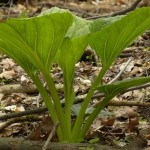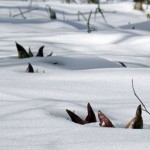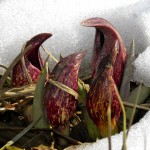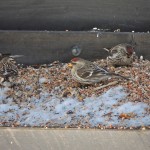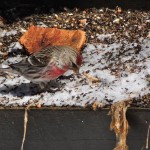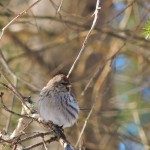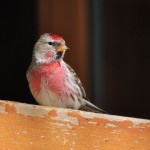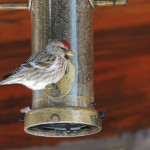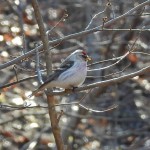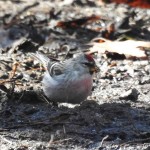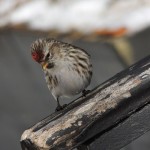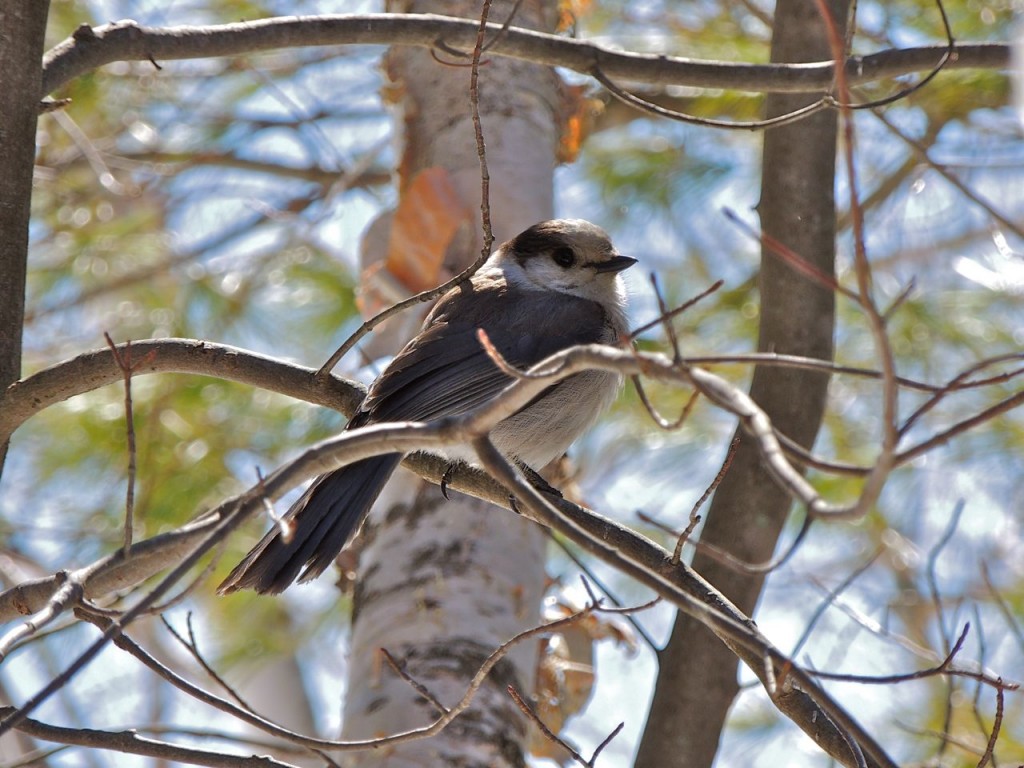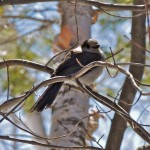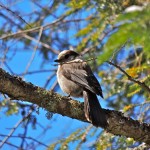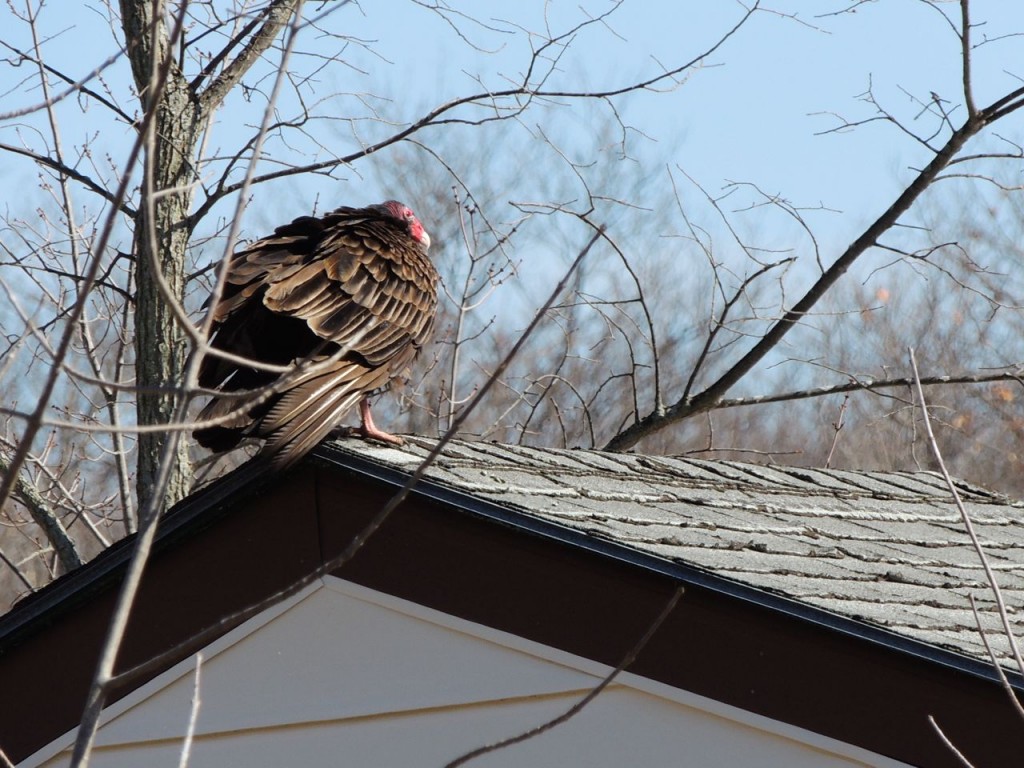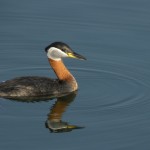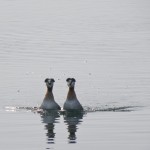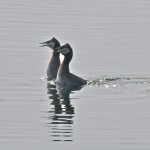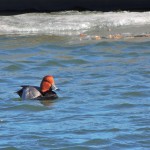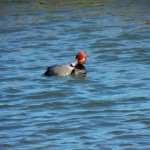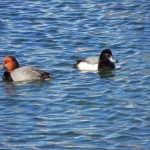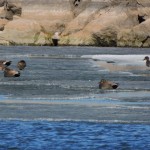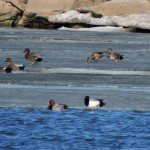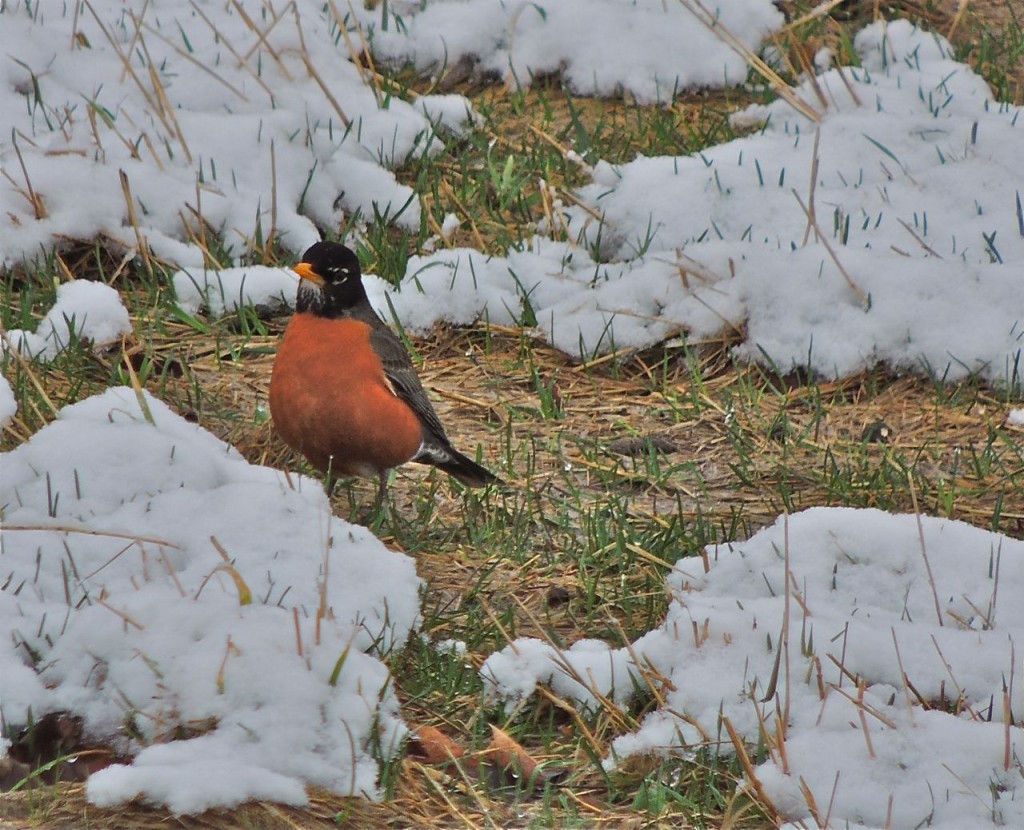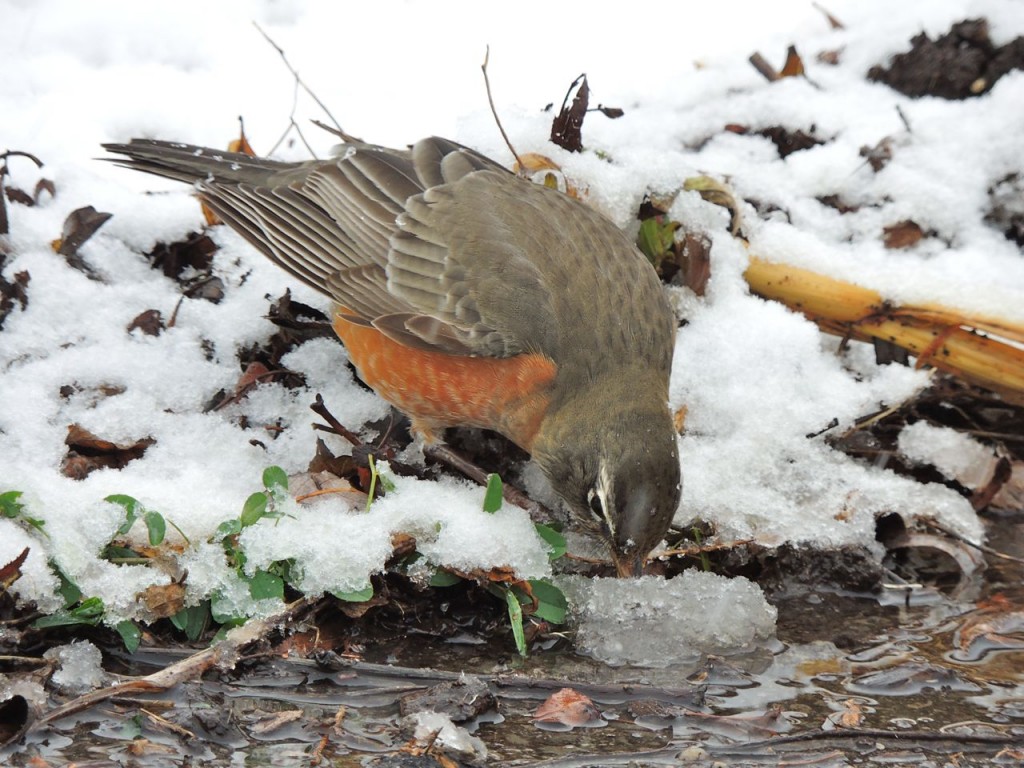1 April 2015. Burlington ON. Today’s date notwithstanding, the unexpected and exciting discovery of a Hoary Redpoll left our small birding group with more questions than answers.
The flow of early spring migrants has taken hold even though the air temperature was just one degree above freezing; it barely changed all morning. Still, our group encountered some encouraging sightings including: A small group of male Wood Ducks looking for open water in hopes of establishing breeding territory; Five Hooded Mergansers, all but one of them males, exploring a narrow opening in an iced-over pond; and a Red-shouldered Hawk wheeling high overhead and glowing in the morning sun. Three Brown Creepers made us all smile; they’re unassuming and industrious little birds.
Our Hoary Redpoll came near the end of our hike. I spotted it while scanning a still largely frozen patch of mosses, woodland debris and tree roots. We were looking for any Skunk Cabbage spears that might have emerged through the ice and snow. Skunk Cabbage when full-grown looks vaguely like a large, bright-green, blowsy cabbage and its crushed leaves smell very musky. It is in the very large arum family of plants (along with Jack in the Pulpit, Cuckoopint and Calla Lily) and has the curious ability to use chemical means to generate sufficient warmth to melt its way through lingering snow and get a start on spring. Its rather introverted and hooded flowers appear long before its leaves just as soon as the first spike has pulled itself up out of the frozen ground. We look for in late March because, if nothing else, it’s a welcome sign of spring.
As I looked over this known Skunk Cabbage patch, I caught sight of a small finch picking for fallen seeds. After a moment’s puzzling I announced that we’d got a Redpoll, meaning (without thinking) a Common Redpoll (the same species I’d seen in flocks just a few days earlier). It was a little hard to follow as it made its way through the debris, but eventually we all managed to enjoy it. I noted, but didn’t comment on, how much lighter overall it was compared to the individuals seen on the past weekend. It seemed somehow more finely drawn and even the pink on its breast was more of a blush than a bold declaration. Then one of our team raised the question whether it might be a Hoary Redpoll. Well yes! That seemed like a plausible fit, but Hoary Redpolls are rarely found this far south. I resolved to do some further reading.
The Hoary Redpoll has long been considered a far more northern species and subtly distinct from the Common Redpoll. It differs in having more frosty white tones and somewhat lighter streaking. All authorities caution that the intergrades between the two species are frustratingly subtle; there are darker Hoary Redpolls and lighter Common Redpolls and there seem to be few if any definitively distinguishing field marks. So did we see a Hoary or did we see a light Common Redpoll?
I believe that by most, if not all traditional measures, we found a Hoary Redpoll. But maybe it’s a moot point because very recent DNA analysis of both species shows them to be virtually identical. The belief is growing that the two species are in fact one and the same; like humans they come in many shades. It seems more than likely that science and the arbiters of bird nomenclature will soon rule that henceforth Hoary Redpolls shall be known as Common Redpolls, leaving the adjective Hoary as a quaint artefact. Either way it was a great sighting.
For the sake of comparison, here are a few photos in galleries visible only on the website, not if you’re reading this as an email. Above are some Common Redpolls seen just a few days ago and below are two shots of today’s Hoary Redpoll. (These two photos courtesy of Bonnie Kinder.)
